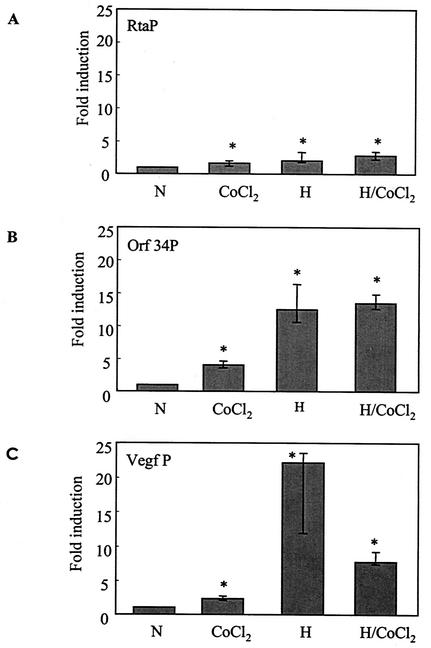FIG. 1.
Activation of KSHV promoters in response to hypoxia and CoCl2. Cells were transfected with 1.3 μg of a reporter plasmid encoding the Rta gene promoter (RtaP) (A), the ORF34 promoter (Orf 34P) (B), or the VEGF gene promoter (Vegf P) as a positive control (C). Two hundred nanograms of an internal control plasmid, pSV-β-gal, was cotransfected for normalization of transfection efficiency. After exposure of cells to normoxia (N) or hypoxia (H), in the presence or absence of CoCl2 for 18 h, luciferase activity was determined and normalized to β-gal activity. Little activity of the pGL3-Basic reporter vector in normoxia or hypoxia was seen in the absence of inserted promoters. In an early representative experiment, for example, the pGL3-Basic reporter vector in normoxia, in hypoxia, and with the ORF34 promoter in normoxia produced 8,230, 7,800, and 90,430 relative light units, respectively. The β-gal activity from the pSV-β-gal internal control plasmid in this experiment yielded 0.148, 0.129, and 0.320 optical density unit, respectively, yielding normalized luciferase values of 5.56 × 104, 6.04 × 104, and 28.2 × 104 relative light units/optical density unit, respectively. For each promoter, the fold induction was calculated compared to the normalized value in normoxia alone (N), which was set at unity. All values represent the median of six separate experiments, each done in triplicate. Error bars denote the quartiles. *, P < 0.05 compared with normoxia.

